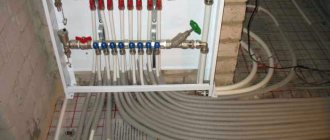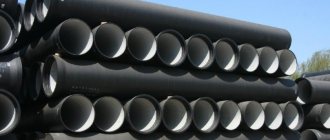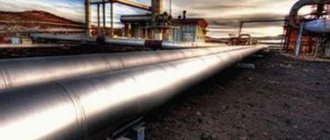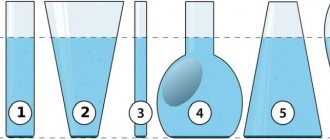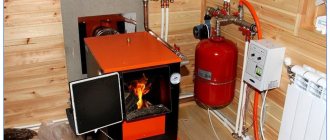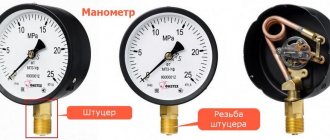Each main gas pipeline has a certain pressure. It depends on the type of end user and the characteristics of the system. Depending on the parameters of a particular network, they are designed to supply gas to different users. There are special standards for apartments and residential buildings. Compliance with them is necessary for the correct operation of all devices and ensuring a decent level of security. Special devices have been developed, the use of which allows you to stabilize the pressure before supply.
What gas is used in residential buildings
Natural gas is a conditional concept that is used for a flammable gaseous mixture extracted from the subsoil and delivered to thermal energy consumers in liquid form.
The composition is varied, but methane always predominates (from 80 to 100%).
In addition, natural gas includes: ethane, propane, butane, water vapor, hydrogen, hydrogen sulfide, carbon dioxide, nitrogen, and helium. An indicator of the quality of natural gas is the amount of methane. All other components of natural gas are unpleasant additives that create polluting emissions and destroy pipes. Natural gas for residential buildings is not recognized by the senses in any way, so strong-smelling gases are added to it - odorants, which perform a signaling function.
Rules and regulations
To determine the required distance from the gas pipe, after developing a residential building project, citizens of the Russian Federation apply for the appropriate permit (approval) from the local gas distribution organization. For a definite answer, you need to know the type of gas pipeline and what pressure is used when supplying it. If there is no data on the type of laying and the pressure in the pipes, it is impossible to give an unambiguous answer.
Gas distribution station
SNiP 42-01-2002 is one of the natural results of the Federal Law of the Russian Federation “On Technical Regulation” No. 184, adopted in December 2002. In November 2008, the Government of the Russian Federation adopted Resolution No. 858, according to which the current sets of rules were developed and approved. This SP was approved at the legislative level in an updated version and was named SP 62.13330.2011.
The most affordable type of fuel has become widespread and has become a publicly available energy resource. Its widespread use has led to the urgent need to develop regulatory documents in which the permitted distances can be found.
Compressor station
Since 2010, SNiP registered by Rosstandart:
- are legislative documents, compliance with which is mandatory;
- checked by supervisory organizations designed to ensure the safety of such structures;
- may be the basis for a decision in a lawsuit;
- are recognized as a significant reason for imposing an administrative penalty upon violation.
SP 62.13330.2011 regulates the distances that must be observed depending on the type of laying of the main gas pipeline or its branches and the pressure of liquid fuel in the pipes.
Near a residential building
If gas is supplied in cylinders, only the prescribed fire safety standards must be observed. More economical and volumetric transportation in pipes provides for differentiated requirements for different types of supplies and pressure levels during their implementation.
Connection diagram
Rules for using gas appliances
The operation of gas equipment must occur in accordance with state standards. It is important to follow the established rules when using the equipment:
- Maintenance of internal and external networks is carried out by qualified specialists who have a license to carry out this type of work;
- It is prohibited to replace network parts and gas equipment without approval from the competent authorities;
- The equipment should be installed only by professional workers; the installation project must first be approved by the relevant organization.
Self-repair or replacement of equipment is not permitted; all work must be performed exclusively by licensed specialists. Otherwise, there may be a risk of an emergency. To prevent gas leaks and other unpleasant consequences, it is important to contact authorized personnel.
Main gas pipelines. Gas pipelines of high, medium and low pressure Glossary
The gas pipeline is an important element of the gas supply system, since 70.80% of all capital investments are spent on its construction. At the same time, of the total length of gas distribution networks, 80% are low-pressure gas pipelines and 20% are medium- and high-pressure gas pipelines.
Gas pipeline classification by pressure
In gas supply systems, depending on the pressure of the transported gas, the following are distinguished:
- high-pressure gas pipelines of category I (working gas pressure over 1.2 MPa);
- high-pressure gas pipelines of category I (working gas pressure from 0.6 to 1.2 MPa);
- high-pressure gas pipelines of category II (working gas pressure from 0.3 to 0.6 MPa);
- medium pressure gas pipelines (working gas pressure from 0.005 to 0.3 MPa);
- low pressure gas pipelines (working gas pressure up to 0.005 MPa).
Low-pressure gas pipelines serve to supply gas to residential buildings, public buildings and public utilities.
Medium pressure gas pipelines through gas control points (GRP) supply gas to low pressure gas pipelines, as well as industrial and municipal enterprises. Through high-pressure gas pipelines, gas flows through hydraulic fracturing to industrial enterprises and medium-pressure gas pipelines. Communication between consumers and gas pipelines of various pressures is carried out through the gas distribution center, gas distribution center and main control unit.
Location of gas pipelines (classification)
Depending on their location, gas pipelines are divided into external (street, intra-block, yard, inter-shop) and internal (located inside buildings and premises), as well as underground (underwater) and above-ground (above-water). Depending on their purpose in the gas supply system, gas pipelines are divided into distribution, gas inlet, inlet, purge, discharge and inter-settlement pipelines.
Distribution pipelines are external gas pipelines that provide gas supply from main gas pipelines to gas inlet pipelines, as well as high and medium pressure gas pipelines designed to supply gas to one facility.
A gas inlet pipeline is considered to be the section from the point of connection to the gas distribution pipeline to the disconnecting device at the inlet.
The inlet gas pipeline is considered to be the section from the disconnecting device at the entrance to the building to the internal gas pipeline.
Inter-settlement gas distribution pipelines are located outside the territory of populated areas.
An internal gas pipeline is considered to be the section from the gas inlet pipeline (gas inlet pipeline) to the connection point of the gas appliance or heating unit.
Materials for gas pipelines
Depending on the material of the pipes, gas pipelines are divided into metal (steel, copper) and non-metal (polyethylene).
There are also pipelines with natural gas, liquefied petroleum gas (LPG), and liquefied natural gas (LNG) at cryogenic temperatures.
The principle of constructing gas pipeline distribution systems
Based on the principle of construction, gas pipeline distribution systems are divided into ring, dead-end and mixed. In dead-end gas networks, gas is supplied to the consumer in one direction, i.e. consumers have one-way power supply.
Unlike dead-end networks, ring networks consist of closed circuits, as a result of which gas can flow to consumers through two or more lines.
The reliability of ring networks is higher than dead-end networks. When carrying out repair work on ring networks, only part of the consumers connected to this section are disconnected.
Of course, if you need to order gas supply to a site or perform gasification of an apartment building, instead of memorizing the terms, it is more profitable and efficient to turn to reliable certified contractors. We will carry out gas supply work to your facility with high quality and within the agreed time frame.
LLC "GazComfort"
Office in Minsk: Minsk, Pobediteley Ave. 23, bldg. 1, office 316AO Office in Dzerzhinsky: Dzerzhinsk, st. Furmanova 2, office 9
What does the gas transportation complex consist of?
The gas supply system includes an extensive network of highways and gas pipelines, distribution stations, auxiliary buildings and structures, as well as technical instruments for monitoring and adjusting the properties and quality of fuel. Industrial enterprises, farms, public utilities, private and apartment buildings - each facility needs a certain amount of gas, and it must have specific specified characteristics. To effectively supply fuel to all these points, it is necessary to check its properties and set the required pressure.
A standard gas supply network consists of the following elements:
- Gas pipelines with different pressure indicators;
- Regulating and distribution stations and installations;
- Control and monitoring equipment;
- Dispatch and operational service.
Types of gas pipelines
Hydrocarbon gases are recognized in the world community as a more promising type of raw material than oil, and much more productive than coal. Transportation of LPG - liquefied hydrocarbon gases - requires special conditions, as well as storage. Sometimes they are called, depending on their origin, LPG (petroleum) or LNG (natural). Today, all three abbreviations are understood to mean the same thing as LPG, but these mixtures sometimes have significant differences in their constituents, suggesting the need to develop separate standards for LNG.
Gas pipeline valve
Due to the potential for explosion hazards, special rules apply to the installation of networks. Exist:
- special SP 62.13330.2011 “Gas distribution systems” (revised and expanded edition of SNiP 42-01-2002);
- auxiliary table (B.1*), which indicates the minimum distances resulting from the set of rules;
- FNiP “Safety Rules for Facilities Using Liquefied Hydrocarbon Gases” (PBs were approved by Order No. 558 dated November 21, 2013);
- recently adopted GOST 9.602-2016 “Unified system of protection against corrosion and aging. Underground structures”, related to the protection of gas distribution systems.
Near the city
The distance from residential and public buildings to the gas pipeline can be found in the “Rules for the protection of gas distribution networks”, approved by Decree of the Government of the Russian Federation of November 20, 2000 No. 878. The basic requirements for any pipelines are reliability and safety in operation.
Much depends on the ability of the entire complex to ensure industrial safety rules at any stage, as well as the ability to shut down individual sections for repair and safety work.
Station
Main gas pipelines
Installed to move raw materials over long distances. They are considered dangerous structures because gas flows through them under high pressure. The first category assumes up to 10 MPa, the second – up to 2.5 MPa. To maintain high pressure along the transportation route, gas compressor stations are needed. Gas distribution stations reduce the pressure to supply it to the hydraulic fracturing unit, from where the fuel is delivered directly to the consumer.
Gas pipe laying
Distribution networks
Gas distribution pipelines are laid from gas distribution stations to the consumer in compliance with the necessary safety rules. This means that they support low, high or medium gas pressure. The permissible distance from the gas pipeline to the foundation of the building (structure) is regulated taking into account the requirements of the set of rules.
The need to maintain a certain distance is dictated by the number of outlets, single-stage or multi-stage, gas pressure at the outlet (low, medium - from 5 kPa to 0.3 MPa, high - from 0.3 to 1.2 MPa).
The photo shows a gas pipe.
Near the village
General information about pressure
The maintained gas pressure depends on the purpose of the pipeline
By definition , pressure is a physical quantity equal to the force that acts per unit area at 90° to the surface. Since blue fuel is transmitted through pipelines, the cross-sectional area of the pipe is the conventional surface, and the pressure determines the speed of movement of the substance.
The pressure in different sections of the gas pipeline from the field to the nozzle in the gas boiler is maintained at different levels.
Types of pressure
The pressure in the pipes is strictly standardized . If the value in the main pipe is too small, it will simply not be possible to move the gas to another station. If the pressure in the home network is too high, at the final point - the burner, the gas mixture will not be able to be mixed with oxygen in the required proportion to support combustion and not provoke an explosion.
Gas pipelines are classified according to the pressure. And since it is constantly maintained, the gas is “associated” with this value.
There are main and distribution gas pipelines.
Trunk - through such a pipeline the gas mixture is transmitted over long distances. Gas compressor stations are installed here at a certain frequency to maintain the required level. The final destination for the main line is the local distribution station. Based on the pressure level, there are 2 types:
- 1st class trunk networks – with operating pressure from 2.5 to 11.8 MPa inclusive;
- Class 2 – maintained according to the standard 1.2–2.5 MPa .
Distribution - gas is delivered through pipelines from stations to the end consumer - in-house networks. There are:
- Category 1 – household gas is transmitted under pressure from 0.6 to 1.2 MPa ;
- category 1a – more than 1.2 MPa;
- Category 2 – 0.3–0.6 MPa.
Residential buildings are traditionally equipped with the lowest pressure networks. However, with the advent of gas boilers, the situation has changed somewhat. To satisfy the demand for gas, a gas pipeline with average performance is connected to residential multi-storey buildings.
Units
Pressure is measured in a variety of ways. But when it comes to a gas line, the following options are most often used:
- 1 mm. rt. st - this unit is very clear, especially when a liquid pressure gauge is used for measurement.
- 1 atm is a more traditional unit of measurement. The first quantity that could be compared with something was atmospheric pressure. The value calculated from absolute zero is called absolute. Hence, excess pressure is equal to the difference between the absolute and atmospheric values. When the vacuum changes, it is determined how much the level in a certain limited volume - a pipeline - is less than atmospheric. This value is called vacuum pressure. When repairing or inspecting intra-house networks, vacuum pressure is measured in the smoke removal system, and excess pressure is measured in the gas pipeline.
- 1 bar is a unit more common in Europe. 1 bar is equal to 100000 Pa.
- 1 Pa is the unit of measurement adopted in the SI system. It is inconvenient because it is too small - only 1 newton per 1 m². When inspecting gas pipelines, a large unit is used - 1 MPa, equal to 1,000,000 Pa (pascals).
The units can be easily converted to each other using an online calculator.
What does gas pressure in pipes affect?
A significant increase or decrease in pressure leads to incorrect operation of the equipment. The norm for residential buildings is 0.003 MPa
For normal operation of gas equipment, gas must be supplied at the pressure for which it is designed. If this is a distribution station in a workshop, the pressure in the pipes should be high. However, an ordinary user - a resident of an apartment or a private house - has to deal only with low or conditionally average values in distribution networks.
In practice, there are 3 situations.
- Medium gas pressure - blue fuel is supplied to the nozzles and burners under normal pressure. In this case, the gas in the correct proportion is mixed with oxygen from the air and burns, providing heat.
- Above the norm , some of the gas does not burn. It either accumulates or oxidizes only to carbon monoxide. This can lead to poisoning, fire or even explosion.
- Low gas pressure - burns completely, but is supplied in insufficient quantities, as a result the fire on the burner cannot be made intense. The heating boiler does not produce enough heat.
If the pressure is too low, the gas equipment is switched off.
Laying methods
The technical characteristics of the gas pipeline are regulated by the relevant GOST. The material is selected based on the category of the system, that is, the value of the supply pressure, and the installation method: underground, above-ground or installation inside the building.
- Underground is the safest, especially when it comes to high-pressure lines. Depending on the class of the gas mixture being transferred, installation is carried out either below the ground freezing level - wet gas, or from 0.8 m to ground level - dry gas.
- Aboveground - implemented in case of unavoidable obstacles: residential buildings, ravines, rivers, canals, and so on. This installation method is allowed on factory premises.
- Gas pipeline in the house - installation of the riser, as well as the gas pipe in the apartment, is carried out only in the open way. It is allowed to place communications in grooves, but only if they are interrupted by easily removable shields. Simple and quick access to any part of the system is an indispensable condition for security.
Requirements for pipe selection
Pipelines made of HDPE, steel, copper and polypropylene are used to transport gas. The technical conditions for their production are specified in the relevant GOSTs. The most used materials for domestic gas pipelines are water and gas pipes. Designed for internal and external networks with compression up to 1.6 MPa, nominal bore 8 mm. It is possible to use metal-plastic products made of polyethylene brand PE-RT.
Underground gas pipelines may be made of polyethylene materials with a frame made of metal mesh and synthetic fibers, metal-plastic products.
For high and medium pressure pipelines, seamless or electric-welded steel pipes of large diameters are used.
The material of pipes and connecting parts is selected taking into account gas pressure, outside air temperature at the installation sites, the presence of groundwater and vibrations.
Gas supply standards and SNiPs
An indicator of the quality of natural gas is the amount of methane. All other components of natural gas are unpleasant additives. There is another characteristic according to which the gas pipeline is divided into categories - this is the gas pressure in the system.
What gas is used in residential buildings
Natural gas is a conditional concept that is used for a flammable gaseous mixture extracted from the subsoil and delivered to thermal energy consumers in liquid form.
The composition is varied, but methane always predominates (from 80 to 100%). In addition, natural gas includes: ethane, propane, butane, water vapor, hydrogen, hydrogen sulfide, carbon dioxide, nitrogen, and helium. An indicator of the quality of natural gas is the amount of methane. All other components of natural gas are unpleasant additives that create polluting emissions and destroy pipes. Natural gas for residential buildings is not recognized by the senses in any way, so strong-smelling gases are added to it - odorants, which perform a signaling function.
What is the gas pressure in the gas pipeline of a residential building?
A gas pipeline is the entire path that gas passes through pipes from the storage location to the consumer. Gas pipelines can be divided into land, surface, underground and underwater. From the point of view of the complexity of the conducting system, they are divided into multi-stage and single-stage.
There is another characteristic according to which the gas pipeline is divided into categories - this is the gas pressure in the system. For gas supply to cities and other settlements, the pressure is:
- low - up to 0.05 kgf/cm2;
- average - up to 0.05 to 3.0 kgf/cm2;
- high - up to 6 kgf/cm2;
- very high - up to 12 kgf/cm2.
This difference in pressure is due to the purpose of the gas pipeline. The most pressure is in the main part of the system, the least is inside the house. For a system with a certain pressure, there is its own GOST, from which it is strictly forbidden to deviate.
Gas consumption standards for home heating
The norms for natural gas consumption by the population are determined in the following areas of its use:
- cooking for 1 person per month;
- heating water with autonomous gas and water supply in the absence or presence of a gas water heater;
- individual heating of residential premises and outbuildings;
- for the needs of keeping pets;
Gas standards for heating are calculated based on consumption in equal shares for the months of the entire year. They are measured in cubic meters per 1 m2 of heated area or per 1 m3 of heated volume. If the building is multi-story, then the calculation is made for each floor separately. As a rule, heated rooms include attics, basements, and some basements.
SNiP for gas supply to residential buildings
SNiP requirements in this area are as follows:
- Gas consumption is determined by the following indicators: for cooking using gas - 0.5 m3 per day; for hot water produced by a gas water heater - 0.5 m3 per day; for heating from a gas heating device - 7 - 12 m3 per day.
- The gas pressure within the internal gas pipeline of an individual residential building cannot exceed 0.003 MPa.
- Overhead gas pipelines on the site of a residential building should be located where there is no passage for vehicles or people. They are placed at a height of at least 0.35 m from the ground to the bottom of the pipe.
- When entering a house, a low-pressure gas pipe is equipped with a shut-off device located at a height of up to 1.8 m from the ground.
- The distance between pipelines located in close proximity to the gas pipeline must provide access for repair and maintenance purposes.
- Any gas storage facilities should be dug into the ground to a depth determined by a distance of 60 cm from the surface to the tank if the ground freezes in winter, and 20 cm if there is no freezing. If storage facilities are installed where the groundwater level does not allow them to be buried, then the tanks must be isolated from water and ensure that they remain stationary. The low-pressure gas pipeline is laid underground, except in permafrost situations.
- Inside the house, the gas pipeline must be open. Otherwise, it is allowed only if the gas pipes are located near special ventilation and are covered with shields that can be removed without special work or equipment.
- Where building structures intersect, the gas pipeline is placed in special cases. Their ends must be placed at least 3 cm from the floor. The pipes should not come into contact with the case (5 cm gap). These 5 cm should be covered with elastic materials.
- Shut-off devices are located in front of meters and gas consuming devices.
Gasification of a private house: connection stages, requirements, documentation
The process of gasification at home is a technically complex and costly undertaking. It is the material issue that is often the main obstacle to providing a building with the most economical method of heat supply. However, the costs of laying a gas pipeline can be recouped in the coming years, provided that the connection is made in compliance with the requirements and the approval of all documents.
Without a full-fledged heating system, ensuring comfortable living in winter is quite problematic. For heating, you can use various types of heating equipment - electric, solid fuel, powered by solar energy. However, gas boilers have been considered the most effective and reliable solution in organizing heat supply for many years.
How to gasify a private house for heating and hot water preparation:
Connection to central gas supply
It is considered the most common option. If there is a gas main on the street where the house is located, you can contact the gas utility at your place of residence and gasify the building using its services. Central gas supply is safer compared to an autonomous system (gas holder) and requires homeowners to periodically adjust the parameters of the gas boiler.
Gas tank installation
Gasification of a country house using gas tanks is resorted to in cases where it is impossible to connect to a centralized main line. Gas holder systems are designed to store relatively small volumes of natural fuel - on average from 2,500 to 20,000 m3, but can provide buildings with the necessary gas reserves year-round.
Application of gas generator or biogas equipment
Gas generators and biogas plants are a rare phenomenon in Russian realities. They are highly efficient and, with proper planning, supply the home with sufficient amounts of fuel. However, some consumers are put off by the need to allocate large areas for their installation and take care of constant supplies of wood, manure and other materials for gas production.
If you decide to gasify your home by connecting to a gas main, first you should find out in whose jurisdiction the gas pipeline running nearby is located. As a rule, it is managed by the local Gorgaz, which should be contacted to obtain permits and the necessary documentation.
The first document required for laying a gas pipeline is technical specifications. Specifications are a permit to connect to the main line, according to which the gas distribution organization (GDO) guarantees an uninterrupted supply of natural fuel and maintenance of its pressure at the proper level.
What documents need to be submitted to the State Registration Office to draw up technical conditions for gasification of a house:
- a request for the issuance of technical specifications indicating the planned launch date of the gas pipeline and the expected gas consumption;
- copies of certificates of ownership of the plot and building;
- copy of ID;
- calculations of maximum fuel consumption (when used over 5 m3 per hour);
- plan of the site and adjacent territory;
- consent of the owner (if the documents are submitted by the tenant);
- power of attorney (when submitting documentation by a representative).
The development of specifications is carried out by GRO specialists. The finished document must specify: hourly fuel consumption, timing of pipeline connection and period of validity of technical conditions.
After issuing the specifications, you need to draw up an agreement with a design bureau - GRO or a third-party company that will prepare a project for gasification of the house. To prepare the agreement, you will need a topographic plan of the site, technical passports for the building and installed equipment. If necessary, the designer can visit the site to take measurements and clarify details.
Gas consumption standards for home heating
Restrictions on the consumption of utilities may manifest themselves in minimum tariffs, permissible power and resource supply standards. The need for standards appears where there are no metering meters.
The norms for natural gas consumption by the population are determined in the following areas of its use:
- cooking for 1 person per month;
- heating water with autonomous gas and water supply in the absence or presence of a gas water heater;
- individual heating of residential premises and outbuildings;
- for the needs of keeping pets;
Gas standards for heating are calculated based on consumption in equal shares for the months of the entire year. Measured in cubic meters per 1 m 2 of heated area or per 1 m 3 of heated volume. If the building is multi-story, then the calculation is made for each floor separately. As a rule, heated rooms include attics, basements, and some basements.
Reasons for the fall
When residential properties are put into operation, the gas supply system is adjusted to optimal parameters, which should fully satisfy domestic needs. However, situations often arise when the pressure in the gas pipeline drops.
A drop in pressure, in addition to discomfort, significantly reduces the safety of using gas appliances. In particular, the burners of a kitchen stove may spontaneously go out, which is fraught with the subsequent leakage of an explosive substance.
What is the increase in consumption at low temperatures?
In winter, a drop in gas pressure is observed most often. This is due, first of all, to a sharp increase in its consumption due to the inclusion of various gas appliances (boilers, boilers, heating appliances, fireplaces, etc.) at full power.
Legal consultation. Result guarantee. Call.
Many residents warm up the room by turning on the burner on the stove. In addition, the throughput of the supply pipeline is also reduced. Condensation forms in the pipes, which freezes at sub-zero temperatures, which significantly reduces the internal diameter of the line.
Poor technical condition of the gas pipeline
The second most common reason is the unsatisfactory condition of the distribution station equipment and the pipes themselves. If preventive maintenance and repairs are not carried out periodically, this will certainly affect the pressure in the gas pipeline.
Often the culprit is pipe metal corrosion , especially if the pipeline was manufactured in violation of standards and low-quality, cheap materials were used.
Leakage: how does it happen?
A gas leak not only reduces its pressure, but is also a fire hazard. This phenomenon is most often observed at the junction of pipes, installation of shut-off equipment, bends, and connections of gas appliances. It can occur both indoors and outdoors (in basements, entrances, on highways).
About availability
leaks
indicates a characteristic, pungent odor of gas. If it is detected, you must immediately notify the gas service.
Connecting new consumers
When designing gas networks, they are designed for a certain consumption with an established reserve for unforeseen cases. In practice, it is not uncommon for additional consumers to be connected that can significantly change the entire gas distribution picture.
Residents often make uncoordinated connections to various gas appliances of decent power. Most often, a 2-burner stove is replaced with a 4-burner unit, and even with a powerful oven. One apartment will have little effect on the system, but several such changes can reduce the pressure in the common gas pipeline.
The strongest impact is exerted by business activity on the ground floor of an apartment building. Catering establishments and other gas consumers must have an individual gas network that is not connected to the gas pipeline at home. However, there are cases of their insertion into an existing pipeline, which significantly affects the gas pressure.
Gas production
In the depths of the earth, gas is found in microcracks under high pressure.
The natural movement of methane occurs according to certain patterns. Gas lies in the earth's crust at a distance of 1-6 km from the surface, so geological exploration work is carried out first. Deep in the bowels of the planet there are very small pores and cracks that contain gas. The mechanism of natural gas movement is simple: methane is displaced from pores with high pressure to pores with lower pressure. Wells are installed evenly across the entire area of the field. Since the pressure underground is many times greater than atmospheric pressure, the gas itself comes out into the well.
Preparation and transportation
Gas is not immediately released through the pipeline; first it is prepared in a special way in boiler houses, thermal power plants and chemical plants. They are dried from water vapor and purified from impurities: hydrogen sulfide (causes corrosion of pipes), water vapor (causes condensation, interferes with the movement of gas). The pipeline is also prepared: an inert environment is created in it using nitrogen. Next, the gas moves through large pipes with a diameter of 1.5 m (under a pressure of 75 atmospheres). Since during transportation the potential energy of gas is spent on friction forces between particles of the gas itself and on friction between the pipe and methane, there are compressor stations that increase the pressure inside the pipe to 120 atmospheres. Underground gas pipelines are laid at a depth of 1.5 m to prevent the structure from freezing.
Types of gas pipelines
- Trunk. The pressure in the system of 6-12 atmospheres is maintained until the gas distribution station, which reduces the pressure to the required level.
- Medium pressure lines. The pressure in the system is 3-6 atmospheres.
- Low pressure lines. The operating pressure ranges from 0.05 to 3 atmospheres. This is exactly the pressure in a gas pipe in an apartment or in a private house.
Switchgear and control devices
- A gas pressure regulator is equipment for controlling the flow of a working fluid.
- Gas control systems automatically shut off the gas supply.
- The pressure reducing unit reduces the fuel pressure.
- The switch redistributes the main flow into separate branches.
- Pressure gauges and flow meters allow you to monitor system parameters.
- Filters clean the gas mixture from impurities.
All these devices ensure the safety of main pipelines and are part of the automatic parameter control system.
Organization of gas networks in cities
Within urban settlements, it is important to ensure the safety of using fuel networks, their economic feasibility, ease of use and maintenance, as well as operational reliability. When designing a system, full compatibility of its components and parts is taken into account, as well as the possibility of temporarily disabling individual parts without affecting the performance of other elements. In this case, repairs will be carried out without problems and the need to disconnect a large number of consumers.
Typically, the diagrams calculate the sequential placement of gas pipelines throughout the city. But a parallel method of laying pipes is also acceptable if gas is supplied to them under different pressures. As a result of this arrangement, the economic efficiency of the system is achieved. The consumption of communications and materials is significantly reduced:
- Low pressure pipes receive fuel from several distribution points;
- In the direction of the central stations, gas is supplied through parallel gas pipelines of medium or high pressure.
Similar communications layouts are also used for industrial enterprises located within residential areas.
The peculiarities of urban development determine the need to organize a gas network in the form of two unconnected zones. The low pressure level involves connecting each section to pipes with a large diameter. In small settlements, a two-stage system is most often used, in which low-pressure pipes are combined with high-pressure gas pipelines.
If it is not possible to locate high-pressure networks in the central part of the city, they are placed on the outskirts. Instead, pipes with medium pressure are laid in the center, creating a three-stage gas supply system. To organize it, gas distribution pipelines with a diameter of 50 to 400 mm are used.
Security zones
If complexes or buildings are being erected that are not involved in any way in the activities of the gas filling station system, compliance with the security zone is certainly taken into account, the length of which depends on the type of protected structure. Its dimensions:
- outside – 2 m on each side, even in cramped conditions;
- from underground - 3 m from the delimiting gas pipeline;
- CNG filling stations and gas filling stations are limited to a closed circle with a radius of at least ten meters from the established boundaries of the complex of capital construction projects.
Table of distances from the underground gas pipeline to buildings
Standard distances are the standard distance from the gas pipeline to communications. Water mains, power lines, roads and railway tracks must be located at a certain distance, which is regulated by a reference table. The minimum horizontal clear distances are taken into account (they depend on the pressure of the gas pipeline) and other existing requirements - electrochemical protection, climatic features, the presence of electrical installation regulations and high-voltage lines, etc.
The distance from buildings and structures to the gas pipeline must strictly comply with the standards. Distance standards are regulated by the pressure of the supplied gas and the type of gas pipeline constructed. For overhead low pressure, only a security zone is required due to existing operating rules. If necessary, it should be reconstructed.
Distance to overhead gas pipes
Nuances
An additional application requires maintaining distances from boiler rooms, as fire-hazardous structures for industrial purposes. Two pipes - only 4 meters away from a residential building. Windows and roofing require at least 0.2 meters, and to the door - 50 cm.
Distancing from warehouses can be regulated by the enterprise, but it should not be less than in SNiP 2.07.01-89 and SP 42.13330.2011. The same applies to laying at the bottom of the slope, which can be regulated by builders and the Russian Railways administration (sometimes the distance from the gas pipeline to the railway tracks is reduced, but less than the norm is not allowed, especially near the embankment).
Gas supply diagram for a private residential building
LPG tanks are taken into account separately. There are several types of them. For example, according to their orientation in space, they are divided into vertical and horizontal, depending on their location - underground and above-ground LPG tanks, single-wall and double-wall LPG tanks - according to the degree of endurance of the structure. The volume, location and type of complex regulate the distances. The standard GPC has a maximum pressure value.
Gas pipeline near the building
Regarding tank installations, the standards of SP 62.13330.2011 are taken into account, but in each specific case the minimum distance is taken into account depending on the characteristics of a particular gas tank. The underground ones go deep by 0.6 m, and the light distance between them is 0.7 m
A gas flow metering point is a prerequisite when using such installations; mixing stations, if necessary, are installed 10 meters away
Underground ones go 0.6 m deep, and the light distance between them is 0.7 m. A gas flow metering point is a prerequisite when using such installations; mixing stations, if necessary, are installed at 10 meters.
Laying an underground gas pipeline
The design of buildings of any kind should be carried out near a gas pipeline only with the knowledge of regulatory and supervisory organizations, which calculate the norm depending on the type of structure and the supplied pressure of valuable chemical raw materials and fuel.
How does the fuel supply turn off?
Any system requires periodic maintenance, which includes replacing certain parts and monitoring the condition of components and assemblies. To make repairs easy and safe, the gas supply must be turned off during work. To ensure a quick shutdown of fuel flow, industrial and household networks are equipped with special valves, otherwise called plug valves.
Disconnection devices are usually installed outside the building; a protective cabinet may be used for this purpose. If you need to disconnect the building from the gas supply, simply turn the valve. Valves are usually installed:
- At gas distribution points at the points of entry and exit of pipes;
- When dividing highways into local city networks;
- At the beginning of an object blocking the path - for example, in front of a railway, highway or pond.
On external gas pipelines, shut-off devices are mounted in special wells. Lens compensators are installed next to the devices. These devices are used to monitor gas levels, as well as to simplify work with shut-off valves. Installation of wells is permitted at a distance of at least 2 meters from the nearest object.
On residential buildings and other structures, valves are located on the external wall, and a distance of at least 1 meter from the openings is maintained. The number of shut-off devices does not depend on the pressure in the system, the length of the pipes or the degree of branching of the network. The presence of each device must be economically justified; you should try to get by with the minimum number for the facility.
